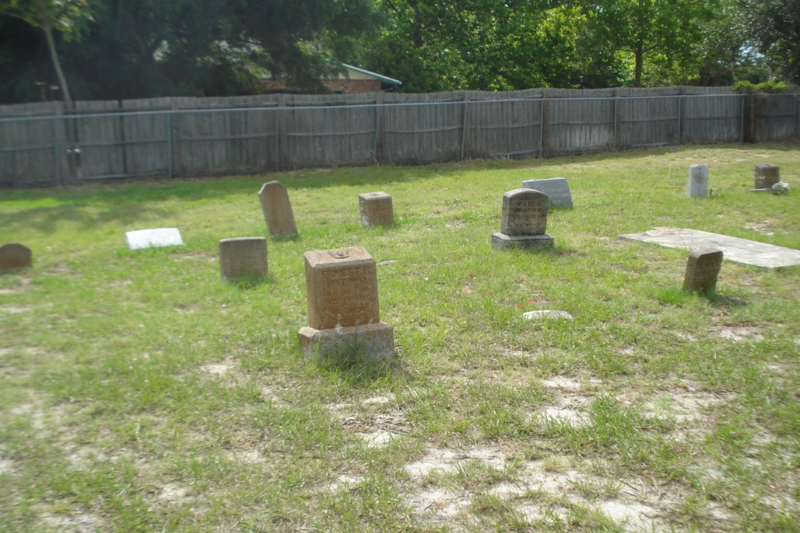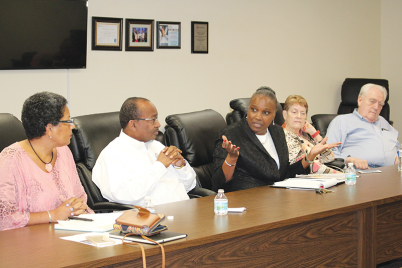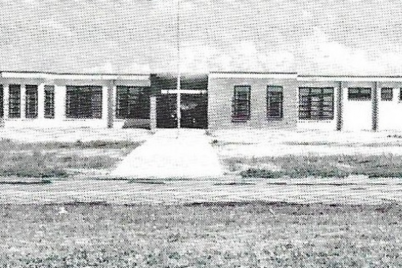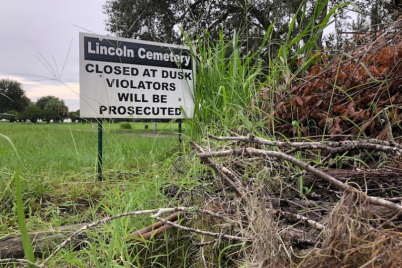In the 1920s, a secluded burial ground opened to serve the Black communities of lower Pinellas. Oakhurst Cemetery sat on a bluff in unincorporated Pinellas County on grounds that later became part of the cemetery now known as Garden Sanctuary.
Photo by James Schnur
BY JAMES A. SCHNUR, The Gabber
Grieving Amidst the Groves
SEMINOLE — In addition to Lincoln Cemetery, an even more secluded burial ground opened in the 1920s to serve the Black communities of lower Pinellas. Oakhurst Cemetery sat on a bluff in unincorporated Pinellas County on grounds that later became part of the cemetery now known as Garden Sanctuary. An alternative name for Oakhurst Cemetery, sometimes used in funeral notices, was “Memorial Cemetery (Colored).”
Oakhurst originally occupied five acres south of 82nd Avenue North and west of 131st Street. When first established, few people lived anywhere near Oakhurst Cemetery. White settlers in Oakhurst tended to live near the current location of Seminole City Park, where Ridge Road meets 74th Avenue.
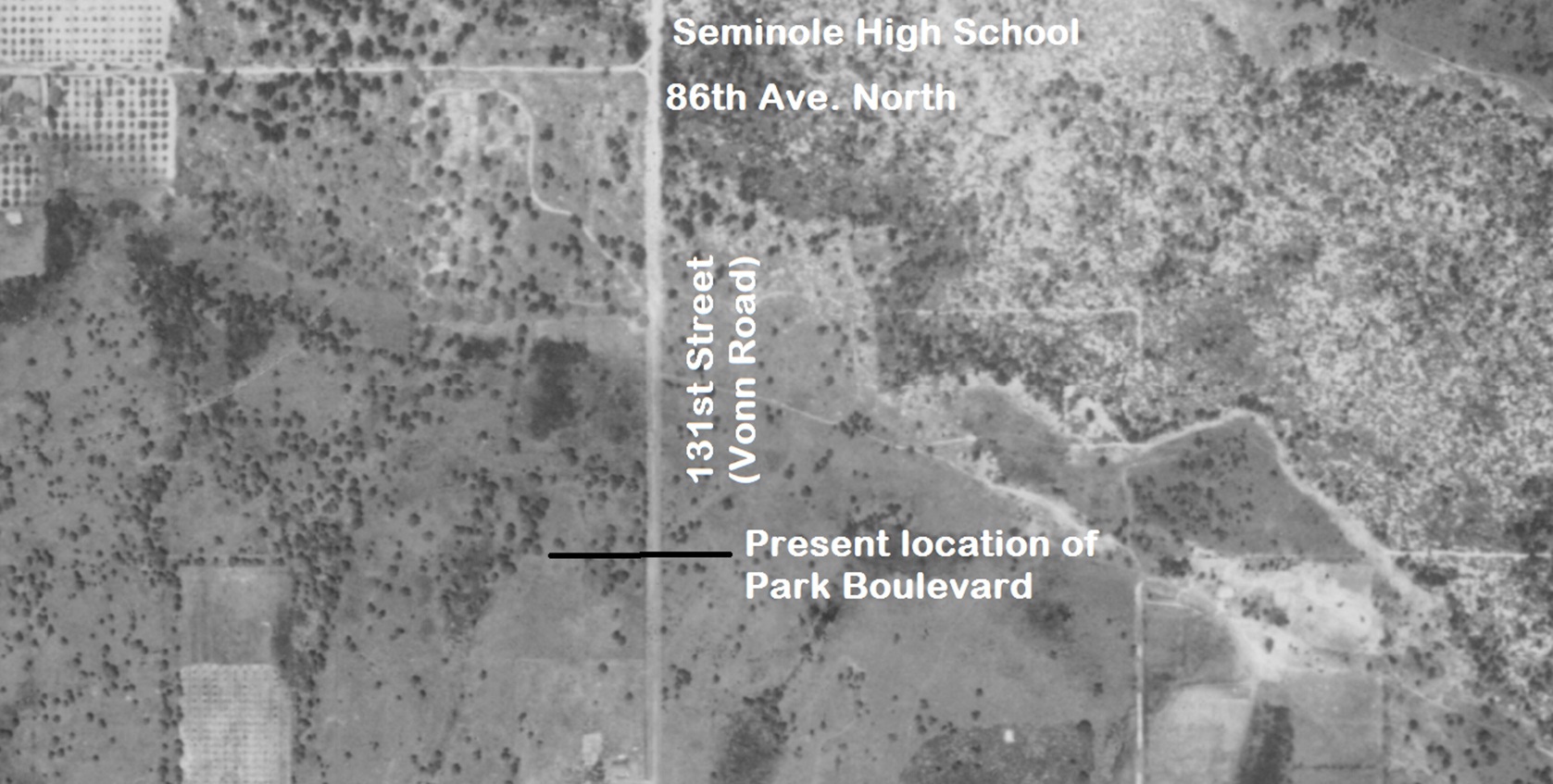
Aerial image of Oakhurst Cemetery in Seminole, 1943. Courtesy of the University of Florida.
A small number of Blacks worked on farms and groves around Oakhurst during harvesting seasons, though none lived in the area at that time. Some of these laborers came from St. Petersburg, with others coming from the Ridgecrest, Baskin Crossing, and Dansville communities near Largo.
A silent place surrounded by trees
For mourners, the journey to Oakhurst Cemetery was a sober and difficult one before the 1950s. Similar to Lincoln, the cemetery occupied a solitary location far from homes or other developments during those years. On a slight bluff, the site offered a quiet location for Blacks to bury their dead without any interlopers bothering them. Headstones were mostly simple in form. Unfortunately, few records were kept.
Getting there was half the challenge. Most drove from St. Petersburg across a narrow two-lane bridge where the twin Bay Pines Boulevard bridge spans are today. They then traveled along Seminole Boulevard, which was little more than a farm road before 1950. A few turns had them on Oakhurst Road (74th Avenue), where they often had to share the path with horses. If they missed the turn onto 131st Street, they might find themselves lost in a grove.
Taking Park Boulevard was not an option until the 1950s. Until Park Boulevard was built upon an earthen dam between present-day Lake Seminole Park and Seminole Boulevard in 1949, that road did not reach the Seminole area.
Noise nearby and disruptions begin
Just when road improvements began to make the trip to Oakhurst Cemetery easier, the number of burials started to decline. Although burials continued into the 1950s, cemetery managers began to alter the layout of Oakhurst.
In November 1953, they hired crews to level some of the graves and made other supposed “improvements” to Oakhurst that disturbed those who had loved ones buried there. Bulldozers leveled many of the headstones. Some graves suffered serious damage.
Many in St. Petersburg’s Black community believed the owners intended to destroy Oakhurst. Aware of what had happened after Evergreen, Moffett, and Oaklawn cemeteries near 16th Street South closed in the mid-1920s, they feared that friends and relatives buried at Oakhurst might suffer the same fate.
The owners made some of these modifications to create spaces for a new Oak Hill Cemetery that would be set aside for whites. Gravesites continued to suffer. One grave, that of a Sgt. John Whitaker, who was buried in 1933, even sat under the right-of-way for a paved road.
By the early 1960s, new developments threatened Oakhurst. Classes began at Seminole High School, located on the other side of 131st Street, north of 82nd Avenue. Homes appeared near the cemetery and school.
People who cut through Oakhurst Cemetery began to vandalize the remaining headstones during the 1960s. The situation became so problematic that workers erected barbed wire around the few headstones that remained. Many were destroyed, some stolen.
Without accurate records, loved ones lost track of burial sites. Today, the lands that comprised the bulk of the former Oakhurst Cemetery — now absorbed as part of the larger Garden Sanctuary Funeral Home and cemetery site – largely consist of unmarked graves and only a few headstones clumped together that may not even have the proper bodies buried beneath them.
Although Lincoln Cemetery and the former Oakhurst Cemetery in the Seminole area suffered decades of neglect, they, fortunately, remain on the landscape, unlike their predecessors in St. Petersburg. The same cannot be said about two former burial grounds in Clearwater that were rediscovered earlier this year.
The next installment of “A Grave Situation” examines these cemeteries and focuses on how the destruction of one of them carried the additional injustice of perpetuating racial segregation in Pinellas schools.

